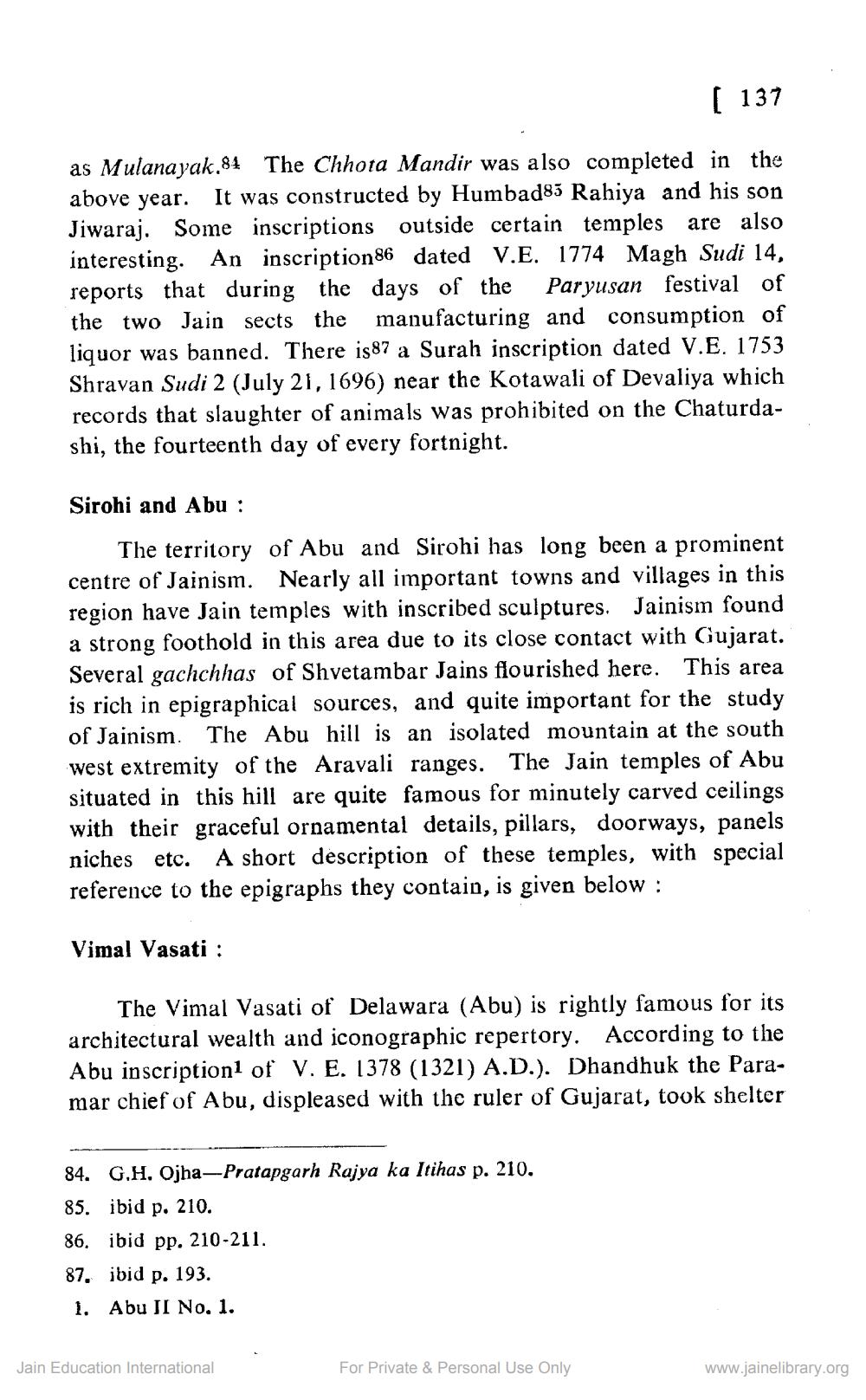________________
( 137
as Mulanayak.84 The Chhota Mandir was also completed in the above year. It was constructed by Humbad85 Rahiya and his son Jiwaraj. Some inscriptions outside certain temples are also interesting. An inscription86 dated V.E. 1774 Magh Sudi 14, reports that during the days of the Paryusan festival of the two Jain sects the manufacturing and consumption of liquor was banned. There is 87 a Surah inscription dated V.E. 1753 Shravan Sudi 2 (July 21, 1696) near the Kotawali of Devaliya which records that slaughter of animals was prohibited on the Chaturdashi, the fourteenth day of every fortnight.
Sirohi and Abu :
The territory of Abu and Sirohi has long been a prominent centre of Jainism. Nearly all important towns and villages in this region have Jain temples with inscribed sculptures. Jainism found a strong foothold in this area due to its close contact with Gujarat. Several gachchhas of Shvetambar Jains flourished here. This area is rich in epigraphical sources, and quite important for the study of Jainism. The Abu hill is an isolated mountain at the south west extremity of the Aravali ranges. The Jain temples of Abu situated in this hill are quite famous for minutely carved ceilings with their graceful ornamental details, pillars, doorways, panels niches etc. A short description of these temples, with special reference to the epigraphs they contain, is given below :
Vimal Vasati :
The Vimal Vasati of Delawara (Abu) is rightly famous for its architectural wealth and iconographic repertory. According to the Abu inscription of V. E. 1378 (1321) A.D.). Dhandhuk the Paramar chief of Abu, displeased with the ruler of Gujarat, took shelter
84. G.H, Ojha-Pratapgarh Rajya ka Itihas p. 210. 85. ibid p. 210. 86. ibid pp. 210-211. 87. ibid p. 193. 1. Abu JI No. 1.
Jain Education International
For Private & Personal Use Only
www.jainelibrary.org




